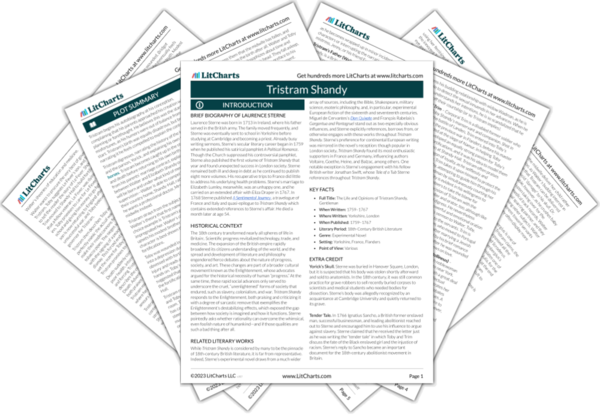Tristram concedes to his critics that he has been digressing constantly from the story of his life, but he promises that he is improving and will be able to tell Toby’s story in a linear format. He ignores the fact that Toby’s amours are themselves a digression, and he also disregards the fact that his narration has long forgotten the life and opinions of Tristram himself. Tristram's graphs sarcastically compare science and literature, "mapping" his previous volumes and their many, many digressions before he clarifies his opinion that the straight lines of science or morality should not be considered interchangeable. Philosophers, Tristram suggests, have sought moral clarity at the expense of both nuance and pleasure.
